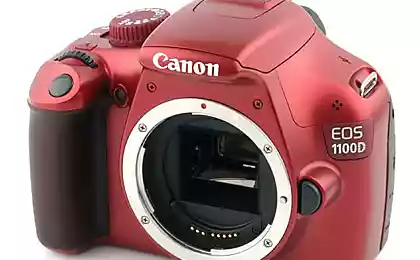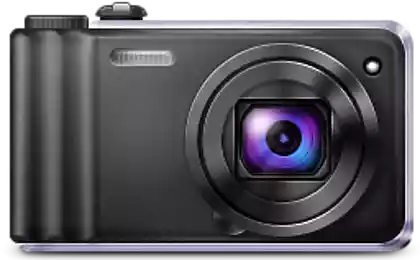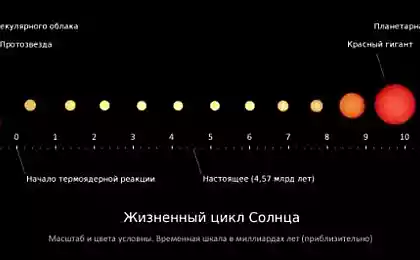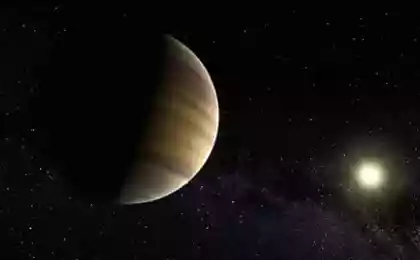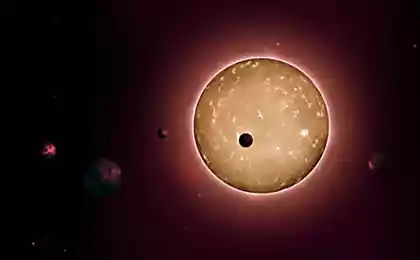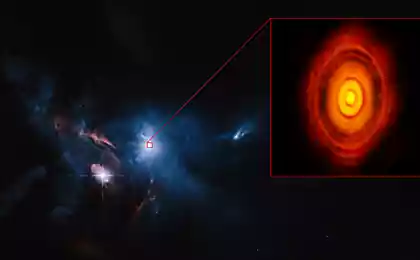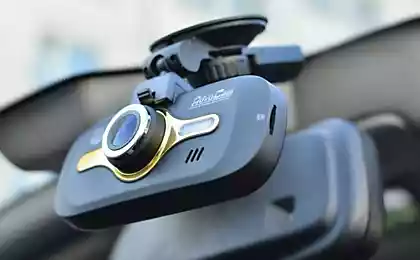1188
Search for planets using a digital camera
Amateur astronomy has always been a pretty expensive hobby. Main article costs - buying or making their own hands a good telescope with a large diameter mirror and buying a digital camera with a sensitive sensor.
But recently the situation seems to be changing. For example, an amateur astronomer David Schneider (David Schneider) with a conventional DSLR was able to observe the planet in 63 light years from Earth !
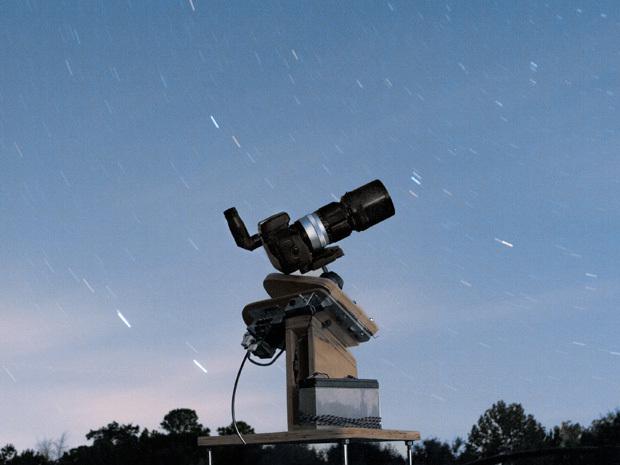
Camera Schneider i>
Digital camera - just one of the elements of the "tracker" that are designed Schneider on the Arduino board with a stepper motor and a few details of the inkjet printer. The design is mounted on a plywood base.
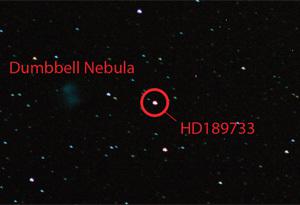
The basic idea is to monitor the target star system for a long period of time. The camera slowly turns after star system to compensate for the Earth's rotation. The camera takes pictures at shutter speeds.
To observe Schneider chose the star HD 189733. It is relatively bright, though not visible to the naked eye.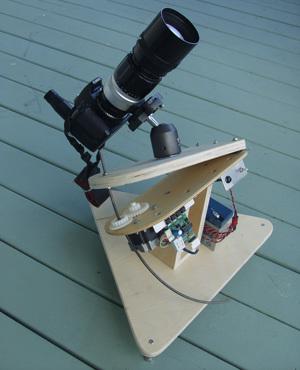
When the initial tip-off chamber is used as a benchmark nearby nebula Dumbbell.
Schneider tried to detect the planet HD 189733 b , opened in 2005. Such planets such as "hot Jupiters" more easily overlooked because of their size and gravity briskness parent star is markedly reduced when the planet passes between it and the Earth. In particular, when passing HD 189733 b star brightness is reduced by 2, 6%, ie a difference of 28 millimagnitud.
It is a short-term "prituhanie" starlight registered Schneider on his amateur equipment in October 2014. The camera Canon EOS Rebel XS is not even attached to a telescope, and worked with a simple 300-millimeter telephoto Nikon, bought on eBay for $ 92 (plus $ 17 for the adapter).
Photo editing software was used Iris . The chart shows that the average change in brightness during the passage of the planet (transit) is very close to a calculated 28 millimagnitudam.
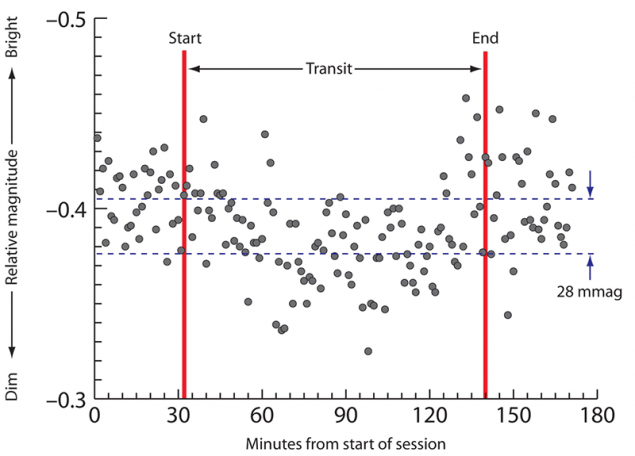
Although amateur astronomers use digital cameras for about 15 years, but in recent years the cost of the necessary equipment has dropped to a very low value. This is good news, because the large telescopes themselves can not cover the whole area of the visible space.
Source: geektimes.ru/post/243015/
But recently the situation seems to be changing. For example, an amateur astronomer David Schneider (David Schneider) with a conventional DSLR was able to observe the planet in 63 light years from Earth !

Camera Schneider i>
Digital camera - just one of the elements of the "tracker" that are designed Schneider on the Arduino board with a stepper motor and a few details of the inkjet printer. The design is mounted on a plywood base.

The basic idea is to monitor the target star system for a long period of time. The camera slowly turns after star system to compensate for the Earth's rotation. The camera takes pictures at shutter speeds.
To observe Schneider chose the star HD 189733. It is relatively bright, though not visible to the naked eye.

When the initial tip-off chamber is used as a benchmark nearby nebula Dumbbell.
Schneider tried to detect the planet HD 189733 b , opened in 2005. Such planets such as "hot Jupiters" more easily overlooked because of their size and gravity briskness parent star is markedly reduced when the planet passes between it and the Earth. In particular, when passing HD 189733 b star brightness is reduced by 2, 6%, ie a difference of 28 millimagnitud.
It is a short-term "prituhanie" starlight registered Schneider on his amateur equipment in October 2014. The camera Canon EOS Rebel XS is not even attached to a telescope, and worked with a simple 300-millimeter telephoto Nikon, bought on eBay for $ 92 (plus $ 17 for the adapter).
Photo editing software was used Iris . The chart shows that the average change in brightness during the passage of the planet (transit) is very close to a calculated 28 millimagnitudam.

Although amateur astronomers use digital cameras for about 15 years, but in recent years the cost of the necessary equipment has dropped to a very low value. This is good news, because the large telescopes themselves can not cover the whole area of the visible space.
Source: geektimes.ru/post/243015/
Using the old battery from the laptop as a source of energy and light: an interesting project from India
Russian elektrobayk, from words to deeds








